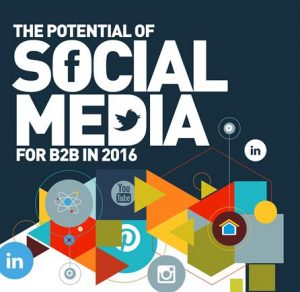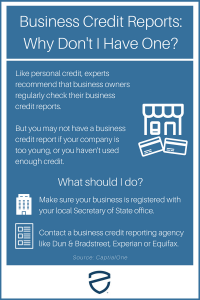We talk about benefits all the time, but sometimes we find ourselves offering employee benefits that cause more issues than they solve. It’s a crying shame too, because most of the time, in offering a benefit, an employer is trying to make life better, simpler or just a little richer. When these efforts blow up in the employer’s face, it can backfire in other ways. For example, if an employer is finally convinced to support a wellness program and it flops, how much harder will it be to convince the executive team to sponsor a wellness initiative later, no matter how well-intentioned or sure of the ROI the employee advocacy team might be?
Not very. So let’s take a look at some employee benefits that can backfire, so you don’t waste time, money and any executive buy-in goodwill you’ve amassed over the years.
Unlimited Vacation.
I know <<holds up hands>> I’m a monster for even hinting that unlimited vacation isn’t the nirvana everyone spouts. But it isn’t. It’s just like ROWE used to be back in the day. Much lauded and discussed at conferences, a big fat bust when attempted to scale in real-life. Why doesn’t it work well at scale? Honestly, there are countless reasons, all of them rooted in human nature.
For every responsible salaried employee who understands how to manage their time, you’ll have a junior-level sales associate who doesn’t see that the reason he’s not hitting his numbers is that he’s gone 5 business days of every month. For every manager who helps her direct reports manage vacation and plan how they’ll spread the work out so nothing gets missed, you likely have a manager who does nothing to help his people figure out how to take time off and never actually says yes to a request. For every person who understands they are evaluated based on performance, you’ll have a corporately seasoned middle manager who doesn’t feel right unless he’s working full-time, all the time.
The answer? Simply have a generous vacation policy. Offer some rollover (but not all so people actually TAKE time off) and build vacation planning into your performance review process.
Check the Box Wellness.
So you’re committed to wellness, are you? Do your employees know that? If you are just offering hard to find benefits to quit smoking, or half-heartedly signing up your team for fun-runs, you’re NOT practicing wellness. Why don’t half-hearted measures work? Because they’re sabotaged with office birthdays, meeting bagels, the secret cabal of powerful smokers and the proliferation of employees who work through their lunch break.
In order for wellness to work and keep working, there have to be consistent touchpoints, some monetary or equivalent reward and options for those employees at either end of the health spectrum. For example, one person may be excited about a diabetes-specific HSA that includes his local pharmacy or offer home delivery, while his cubicle mate may opt for the gym membership and free healthful snacks. Both should be able to create their own goals, reap rewards for success and build our benefits from a wide array to suit their lifestyles.
Discount Programs That Only Impact the Employer.
There is absolutely nothing wrong with getting a discount on the products your company sells, especially if you work for a consumer goods company like Apple or Nike…but there are a few serious caveats to consider when offering this benefit.
Firstly, does your company sell something your employees actually want? If you’re offering a discount on something that few of your employees will ever want, it feels less like a benefit and more like you’re blurring the line between employee and consumer and trying to create a new revenue channel…for the company.
In the second place, is your discount really a discount? 10% off isn’t even worth driving to the outlet mall, will your employees really see it as a sign of goodwill if that’s a company benefit?
Finally, is your program overly restrictive? Do you ensure it’s only available during a very specific time, for niche products and cannot be combined with other discounts? Congratulations, what you have is an employee cudgel and not a benefit. No one wants that mess.
All Play, No Work.
Do we have a ping-pong table at Red Branch? Yes, we do. Do we also expect that work gets done? Yes, we do. Do we use something you can get at Dick’s Sporting Goods for $ 179 as a recruiting tool? C’mon man. There are other reasons to avoid a pleasure only workplace rep.
While very young workers may be attracted to an all fun, all the time atmosphere; it could have a negative impact on business development. Not to mention the fact that people generally want to feel like what they’re doing has meaning. This is very hard to do when everything is treated in a totally casual manner. This isn’t a benefit for your employees or your workplace. Have fun, but balance it with creative, meaningful work to give your employees the benefit of a career and a workplace that can take them places.
Meaningless Titles and Authority.
Remember when Dwight from the Office argued with Michael about the “Assistant Office Manager” rather than “Assistant to the Office Manager”? That alone proves that titles are really in the eye of the beholder. Poor leaders sometimes use meaningless titles or authority to boost morale, but it can have the opposite effect. When everyone’s a manager…nobody is. Instead, create clear career paths, with milestones to help employees know if they’re on the right track to a real promotion.
Ridiculous Office Layouts.
I recently saw a picture of an office that had a large maze-like staircase with levels and weird pillows all over it. The benches seemed too narrow to sit or lay on, there was no back support. I saw no outlets and more importantly, no people. So many people allow office design professionals to build out offices that have very little practical application.
In real life, people have hip and back issues, need privacy to do their work and power and space. When you tout your hip new office as a benefit, keep in mind someone on the internet (me) might be giving you the side-eye.
The Everything You Need is Right Here Benefit.
Do you provide on-site grocery delivery, catered lunch and a gym right next door? While these employee benefits might seem glorious to recruits, they can have the effect of making your employees never leave, which can lead to serious burnout. While perks like this make life more convenient, pay close attention to what you’re offering and why. Your employees are. Recently, a large tech company offered wi-fi on the company shuttles. While it may have been meant as a kind gesture, employees felt pressured to keep working on the shuttles, which certainly doesn’t seem like a benefit.
Always-On Technology.
We thought about providing our employees with a tech allowance for things like cell phones and tablets. It seems like a no-brainer. These tools are expensive and subsidizing this probably feels like a huge pay bump to an employee. However, we soon realized the employees would feel inclined to work after hours, knowing their cell phone was being paid for by the company. We didn’t want that kind of pressure on our people.
Although all these employee benefits can certainly backfire, that shouldn’t stop yours from creating a comprehensive benefits strategy that works for your employees and will scale with the company. What are some ways to do that?
- Think in terms of family, not maternity when building parental leave.
- Build in multiple kinds of health plans, including HSA, so your people have options.
- When it comes to saving for the future, consider all ages when selecting plans.
- Understand your workforce is made up of people with different socioeconomic means when thinking of transportation or commuter benefits.
- Don’t forget that learning can be a huge benefit, whether formal or informal.
(87)






